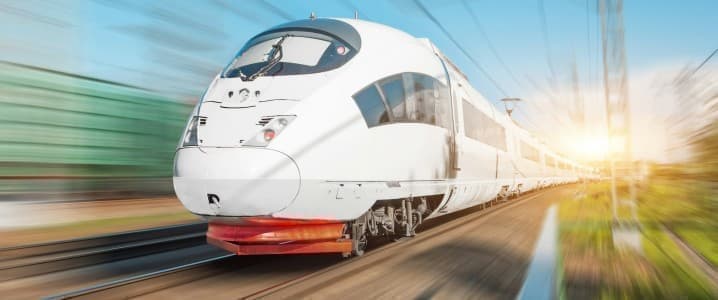By Felicity Bradstock – Sep 06, 2025, 10:00 AM CDT
- Japan pioneered battery-powered passenger trains, cutting thousands of tonnes of CO? since 2016.
- The UK is testing battery trains on intercity routes and metro lines, aiming for fast-charging systems to bridge gaps in electrification.
- U.S. startup Voltify is targeting freight rail with battery-powered “VoltCars,” estimating potential savings of $94 billion over 20 years.

As countries worldwide strive to undergo a green transition, one sector that many are finding challenging to decarbonise is transport. Shifting large-scale passenger transport away from fossil fuels to be powered by electricity, batteries, or green fuels is a complex endeavour. However, thanks to higher investment and recent innovations, we are getting ever closer to achieving green transport technology, such as battery-powered trains.
Several countries have invested in research and development into battery trains, some with greater success than others. In Japan, Japan Rail introduced its first fleet of battery trains between 2016 and 2019 following the conversion of 18 Dencha trains from diesel power to electric battery. These became the world’s first battery trains for an AC network.
The trains run on AC power from overhead power lines through a pantograph, just like a conventional train, with the AC power being converted to charge the train’s battery. In non-electrified sections, the pantograph is lowered, and the train is powered by a battery. As there is no diesel car pulling the train, there is no engine noise, vibration, or exhaust emissions. Maintenance costs are also reduced. By 2021, the operators JR Kyushu and Hitachi Rail announced that they had cut carbon emissions by around 2,700 tonnes since the 2016 launch.
In the U.K., several train operators are hoping to follow in Japan’s footsteps after seeing the success JR Kyushu and Hitachi Rail have experienced over the last nine years. In 2024, Hitachi Rail replaced the diesel engine in one of its intercity Class 802 trains with a single 700kW battery in its U.K. operations, with 70 km of the pilot journey powered wholly by battery. The initial test was a success, giving hope for a broader rollout of the technology.
The chief director for Hitachi Rail’s U.K. and Ireland operations said, “Everyone should be immensely proud of creating battery technology that had zero failures during the entire trial. Using our global expertise, Hitachi Rail has created new technology, which means the greenest mode of transport just got greener.” The aim now is to develop a full intercity battery-powered train with a range of between 100 km and 150 km.
Other U.K. operators are also progressing in the shift to battery-powered. The U.K. is well-suited to this transition as much of the country’s rail network already runs on overhead electric lines. However, full electrification of Britain’s rail could take several decades, according to the operator GWR, due to the high set-up costs. For this reason, GWR hopes to introduce more fast-charging battery trains to fill the gap.
GWR recently converted a London Underground train to trial its battery technology across a five-mile return trip between West Ealing and Greenford in West London. It placed fast-charging rails are placed within existing rails in stations to charge the battery. The project showed promise for a wider rollout, and GWR saw around an 80 percent decrease in carbon emissions during operation compared to an equivalent diesel train on the same route.
In the U.S., according to a 2021 study, if U.S. rail freight shifts to battery power, it could save companies around $94 billion over 20 years. One startup is hoping to launch a new battery-powered service for U.S. freight trains to support this goal. Voltify hopes to encourage U.S. freight companies to switch from diesel power to rechargeable batteries over the coming decade, using its VoltCars. These cars are essentially sodium-ion batteries on wheels that are used to pull existing train carriages.
Voltify’s co-founder, Daphna Langer, believes she can earn her company as much as $10 billion a year if she can convince major U.S. rail freight companies to make the switch. At present, the six largest freight railroad companies in the U.S. — including Union Pacific and CSX, collectively spend over $11 billion a year on diesel, according to Voltify’s estimates. This means that investing in batteries and shifting away from diesel could result in significant savings in fuel. While there are nearly 140,000 miles of freight railroad track in the U.S., little of it is electrified.
Voltify is currently developing solar-powered microgrids that it hopes to use to eventually power trains across North America. Powering the whole region’s network would require up to 1,400 microgrids, according to company estimates. The startup hopes to commence its pilot project with a Class 1 railroad company in early 2026 and develop commercial-scale operations a few months later.
While we are still a long way from achieving widespread battery-powered passenger and freight rail travel, recent innovations and successful pilot projects show great promise. With a variety of batteries being developed, tobe powered by overhead lines or train tracks, there is significant potential for a wider deployment of the technology in the coming decades, which could save rail companies vast amounts on fuel, as well as contribute to a significant reduction in carbon emissions.
By Felicity Bradstock for Oilprice.com
More Top Reads From Oilprice.com
- Russian Oil Giants Buckle Under Low Prices and Sanctions
- Europe Triggers Iran Sanctions Snapback
- India’s Defiance Could Reshape the Oil Chessboard
Download The Free Oilprice App Today

Back to homepage
![]()
Felicity Bradstock
Felicity Bradstock is a freelance writer specialising in Energy and Finance. She has a Master’s in International Development from the University of Birmingham, UK.
More Info
Related posts
Leave a comment






